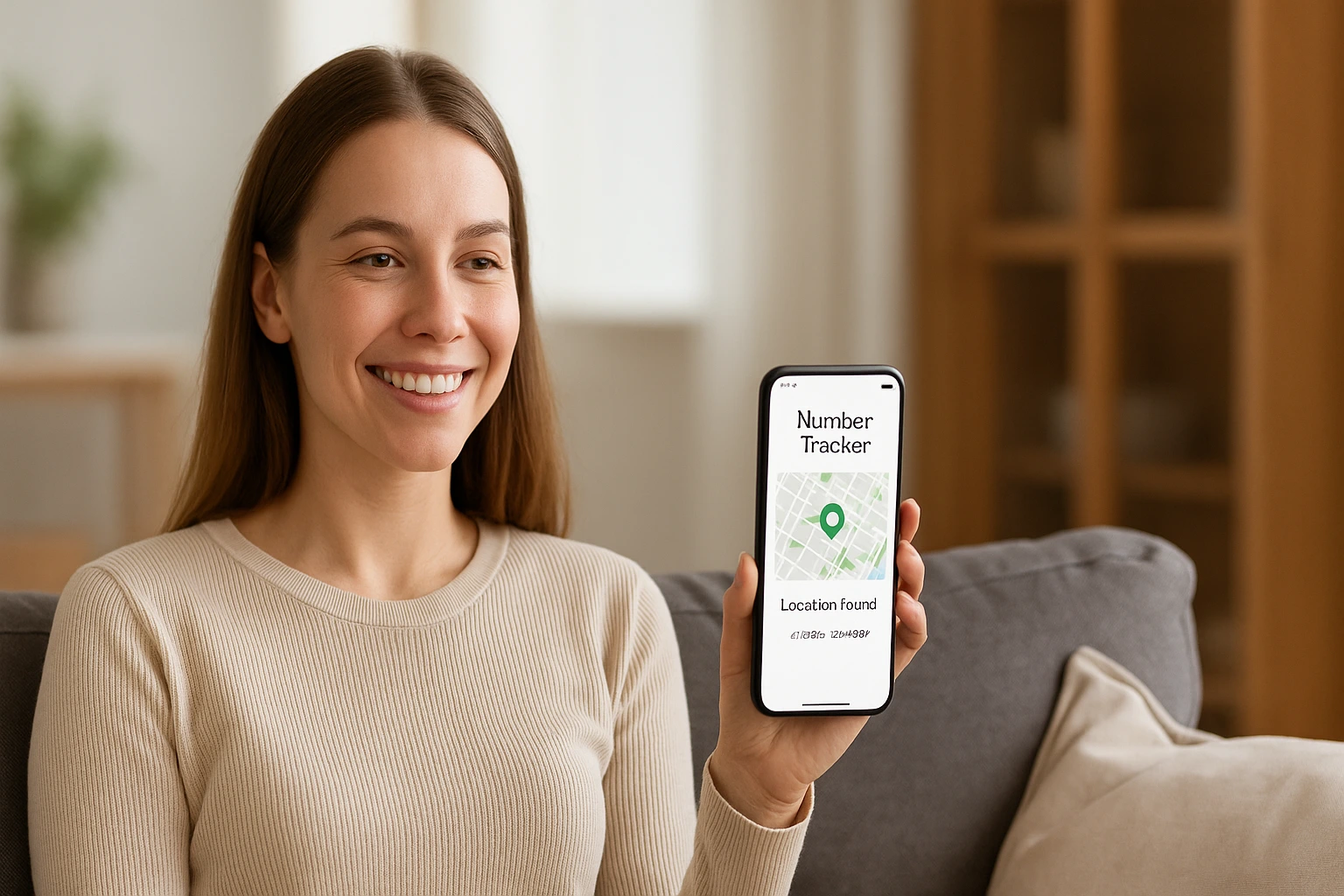Losing your iPhone can trigger immediate panic—especially if it’s offline, turned off, or out of battery. Fortunately, Apple’s tightly integrated ecosystem includes powerful tools designed to help users locate their devices quickly and securely. Whether your phone is missing temporarily or potentially stolen, knowing how to find last location of iPhone is critical.
Use Find My iPhone via iCloud
The Find My iPhone feature on iCloud.com is one of the easiest ways to find a lost or stolen iPhone—even if it’s not currently online.
Steps to Use Find My via iCloud:
- Go to icloud.com/find on any web browser.
- Sign in using your Apple ID and password.
- Click “All Devices” at the top of the screen.
- Select your missing iPhone from the list.
What You’ll See:
- If your iPhone is online, you’ll see its real-time location on the map.
- If it’s offline, iCloud will display the last known location—up to 24 hours prior.
- You can also enable “Notify Me When Found,” which sends you a notification when your device comes back online.
Quick Tip: If your iPhone has been powered off or lost signal, Find My iPhone stores the last known location for 24 hours, giving you a window of opportunity to track it before the data is erased from iCloud servers.

Use the Find My App on Another Apple Device
If you have another Apple device—like an iPad or MacBook—or access to a trusted person’s device with Family Sharing enabled, the Find My app is another effective tool.
How to Use the Find My App:
- Open the Find My app on any iPhone, iPad, or Mac.
- Tap the Devices tab at the bottom of the screen.
- Choose your lost iPhone from the list.
What You’ll Get:
- The current location, if the device is online.
- The last known location, if the device is offline.
- If you have Find My network enabled, this location history can remain available for up to 7 days—even if the device is turned off.
Important Detail: The Find My network uses crowdsourced Bluetooth signals from nearby Apple devices to help locate your iPhone anonymously—even if it’s not connected to Wi-Fi or cellular.
Additional Note: Stolen Device Protection & Location Delays
Apple prioritizes your security, so if you’ve recently:
- Changed your Apple ID password
- Enabled Stolen Device Protection
You may experience a temporary delay in location updates. This is a built-in feature to prevent malicious actors from misusing your account after suspicious activity.
Pro Tip: Enable “Notify When Found”
If your device is temporarily out of range or battery:
- Tap or click “Notify When Found” in either the Find My app or iCloud.
- Apple will send you a notification immediately once the device reconnects to a network.
This feature is especially useful if you’ve dropped your phone somewhere and expect it to be turned on, or if the battery simply ran out.
How Does Find My iPhone Determine Location?
Apple uses a hybrid system to calculate the location of your iPhone, which includes the following technologies:
| Technology | Purpose | Accuracy Range |
| GPS | Uses satellites for precise outdoor positioning | 5–20 meters |
| Wi-Fi | Estimates indoor location based on known Wi-Fi hotspots | 10–50 meters (depends on signal) |
| Cell Towers | Uses signal triangulation when GPS/Wi-Fi is unavailable | 100–1000 meters |
| Bluetooth | Detects nearby Apple devices through the Find My network | Varies (10–30 meters typically) |
When all four are active, Apple can provide highly accurate, near real-time location tracking. But when the iPhone is offline, turned off, or low on battery, the system relies on the last data points gathered before the disconnect—which is where the Find My network becomes invaluable.
How the Find My Network Enhances Location Tracking
With iOS 13 and above, Apple introduced a feature that makes location recovery possible even when the iPhone is powered off or disconnected: the Find My network.
How it works:
- Your iPhone emits a low-energy Bluetooth signal.
- Nearby Apple devices (iPhones, iPads, Macs) detect this signal.
- The devices anonymously and securely relay the location to Apple’s servers.
- You see the updated location in the Find My app or via iCloud.
This decentralized, encrypted system allows you to recover a lost iPhone even if it has no internet or mobile connection, as long as another Apple device is nearby.
Use Significant Locations for Clues
If your iPhone is still missing and Find My hasn’t provided results, you can check Significant Locations—a local record of the places you’ve been frequently. These are not shared with Apple and are stored securely on your device.
To access Significant Locations:
- Open Settings on your iPhone.
- Tap Privacy & Security > Location Services.
- Scroll to the bottom and select System Services.
- Tap Significant Locations.
- Authenticate using Face ID or Touch ID.
You’ll see a timeline of recently visited places, complete with maps and timestamps. This can help you retrace your steps—especially if you lost your phone while running errands, traveling, or commuting.
Privacy Tip: Significant Locations are end-to-end encrypted and only accessible by you. They can be turned off completely from this menu if you prefer not to keep a record.

Tips to Improve Location Accuracy Going Forward
To increase your chances of locating your iPhone in the future, consider optimizing your device’s settings for maximum accuracy and tracking efficiency.
Enable Location Services
Make sure Settings > Privacy & Security > Location Services is toggled ON.
Keep Wi-Fi, Bluetooth, and Cellular Enabled
- Even if you’re not connected to a Wi-Fi network, having Wi-Fi enabled improves indoor location accuracy.
- Bluetooth supports Find My network functionality.
- Cellular data enables continuous location sharing when GPS or Wi-Fi fails.
Update to the Latest iOS
Apple regularly releases bug fixes and security patches that improve the performance of services like Find My and Location Services.
To update:
Settings > General > Software Update > Download and Install (if available)
If you’ve followed all the steps in iCloud and the Find My app and still haven’t recovered your device, don’t panic. Apple offers advanced tools to help you protect your personal data, discourage theft, and increase the chances of recovery—even after your iPhone has gone offline. Additionally, you can use trusted third-party apps like Number Tracker to enhance your location awareness and add a second layer of privacy and control.
1. Mark Your iPhone as Lost
Mark As Lost is a powerful feature within the Find My ecosystem that lets you remotely lock your missing iPhone, display a custom message, and track location updates.
How to activate Mark As Lost:
- Open the Find My app or go to icloud.com/find.
- Select your missing iPhone from the list.
- Scroll down and tap Mark As Lost.
- Add a phone number and custom message (e.g., “This iPhone is lost. Please call me at [number].”).
What happens next:
- Your iPhone is locked remotely using your passcode.
- Apple Pay and other sensitive features are disabled.
- Anyone who finds your phone sees your message and contact number—even if the screen is locked.
- If the iPhone comes back online, you’ll receive a notification with its location.
Tip: This is ideal if you believe the phone is misplaced in a public location or has been found by someone willing to return it.
2. Erase iPhone Remotely (Only as a Last Resort)
If you’re confident your device was stolen or is permanently unrecoverable, you can wipe all personal data to prevent unauthorized access.
Steps to erase your iPhone remotely:
- Go to the Find My app or iCloud.com.
- Select your iPhone and tap Erase iPhone.
- Confirm the action and wait for Apple to begin the remote wipe.
What happens:
- All data is permanently deleted from your device.
- Activation Lock remains enabled, making the iPhone unusable without your Apple ID.
- If the device is offline, the wipe will occur automatically once it reconnects to the internet.
Caution: Once erased, you will no longer be able to track the device or see its last known location.
3. Consider Third-Party Tools: Why Number Tracker Is a Smart Addition
While Apple’s ecosystem is robust, some users prefer an extra layer of privacy and flexibility. That’s where tools like Number Tracker come in. Built for both safety and discretion, Number Tracker offers location features with a strict focus on user control, encryption, and consent.
Key Features of Number Tracker:
| Feature | Benefit |
| Encrypted Location Sharing | Keeps your data safe from third-party access |
| Consent-Based Tracking | Only tracks with user permission |
| Offline Location Notifications | Alerts you to the last known location when signal is lost |
| Minimal Data Footprint | Doesn’t collect unnecessary personal info |
Whether you’re coordinating with family, managing team members, or simply verifying the location of a trusted contact, Number Tracker gives you full control—without overstepping your boundaries.
4. Stay Ahead: Protect Yourself Before the Next Emergency
Losing a phone once is enough to rethink your digital habits. Here are some best practices to prepare now and protect your data in the future:
Enable These Settings Immediately:
- Find My iPhone: (Settings > Apple ID > Find My > Find My iPhone → ON)
- Send Last Location: Sends your phone’s final location before the battery dies.
- Location Services: Always ON (Settings > Privacy > Location Services)
- Two-Factor Authentication: Secures your Apple ID against unauthorized changes.
Consider These Tools:
- Number Tracker: Adds flexible, privacy-first location control.
- Secure Notes or Password Managers: Store device serial numbers, IMEI, and proof of purchase for quicker claims and support.
Recovering a lost iPhone may seem daunting, but Apple’s ecosystem provides robust solutions that blend convenience with security. If your iPhone goes missing:
- Use Find My via iCloud or the app to locate the last known position.
- Tap into Significant Locations to retrace your steps.
- Activate Mark As Lost to secure your device and display contact info.
- Use Erase iPhone only if all else fails.
- Consider enhancing your safety strategy with Number Tracker, offering consent-based location updates and encrypted tracking.
By taking these steps, you not only increase the chances of recovering your iPhone—but also reinforce your personal privacy and digital security going forward.

